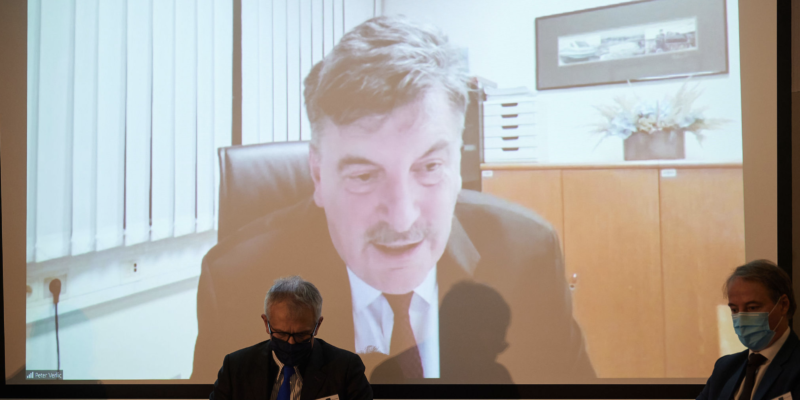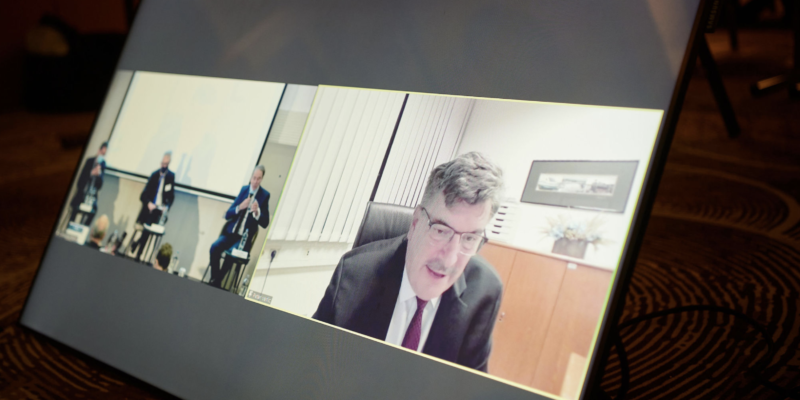The Community of European Railway and Infrastructure Companies (CER) and Slovenian Railways (SZ), in cooperation with the Slovenian Presidency of the Council of the EU, held an event entitled “Building back better with rail”. This event provided the perfect opportunity to took stock of the priorities of national recovery programmes, and the best possible allocation of future funding.

In 2020, in response to the COVID pandemic that hit EU economies, the European Commission and EU Member States mobilised massive resources, on a scale never before seen in EU history. This Recovery and Resilience Facility (RRF) is now making the transition towards a greener, more digital economy more achievable through the funding of projects in Member States’ National Recovery Plans. The European mobility sector finds itself playing a central role both in making itself more sustainable and enabling other sectors of the EU economy to count on more sustainable logistics.
Keynote speaker Jernej Vrtovec, the Slovenian Minister for Infrastructure, and panellists Kristian Schmidt, Land Transport Director at the European Commission’s DG MOVE, Jean-Marian Marinescu, EPP Coordinator in the European Parliament TRAN Committee, and Dr. Peter Verlič, Director of the SŽ Institute of Traffic and Transport Ljubljana, discussed the priorities of national recovery programmes and the optimal destinations for future funding to achieve the objectives and targets of the Smart and Sustainable Mobility Strategy and to complete the TEN-T Network.
CER Executive Director Alberto Mazzola welcomed an interesting discussion on these topics noting that “the boost given to many rail projects by the Recovery and Resilience Facility is a recognition of the role that rail can play for the green and digital transition of the EU economy. The revision of the TEN-T Regulation will have to set the right standards and the right destinations of CEF resources, which combined with RRF ones can contribute to achieve the goal of an even more efficient and finally interoperable continental rail infrastructure for both passenger and freight traffic”.
Source and photo: www.cer.be
